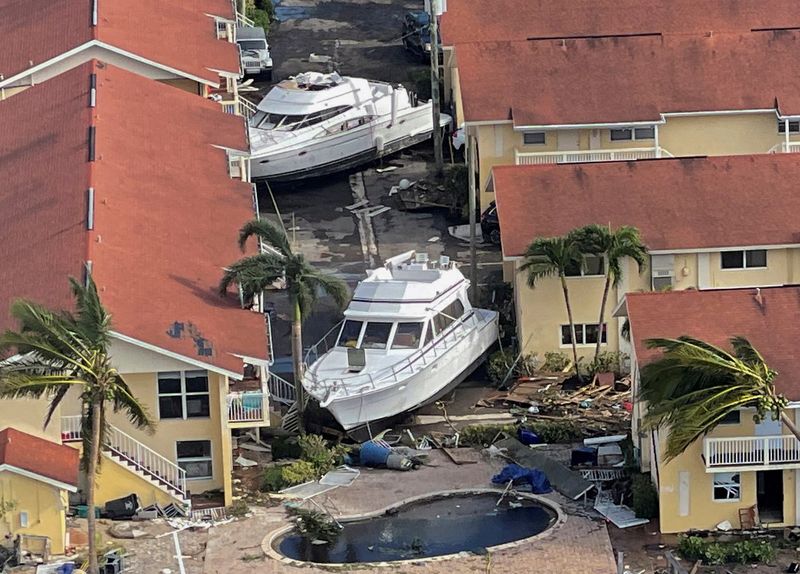By Noor Zainab Hussain
(Reuters) -Insurers are bracing for a hit of between $28 billion and $47 billion from Hurricane Ian, in what could be the costliest Florida storm since Hurricane Andrew in 1992, according to U.S. property data and analytics company CoreLogic.
Wind losses for residential and commercial properties in Florida are expected to be between $22 billion and $32 billion, while insured storm surge losses are expected to be an additional $6 billion to $15 billion, according to CoreLogic.
"This is the costliest Florida storm since Hurricane Andrew made landfall in 1992 and a record number of homes and properties were lost," said Tom Larsen, associate vice president, hazard & risk management, CoreLogic.
"Hurricane Ian will forever change the real estate industry and city infrastructure. Insurers will go into bankruptcy, homeowners will be forced into delinquency and insurance will become less accessible in regions like Florida," he said.
More than two million homes and businesses were without power in Florida early on Friday, as Hurricane Ian barreled toward South Carolina leaving behind widespread damage in the Sunshine State.
The insurance industry also expects tourism sector losses in Florida.
"There has been a lot of reported damages to resort properties, hotels. It's likely there's going to be a period where the infrastructure just can't absorb people coming in," Robert O’Brien, managing director with broker Marsh's U.S. property claims practice, said.
Credit rating agency Fitch on Thursday said insured losses could range from $25 billion to $40 billion for Florida, which could increase depending on the effect of the storm in the Carolinas.

That compares with $65 billion loss from Hurricane Katrina in 2005 and $36 billion loss from Hurricane Ida in 2021.
Recovery is expected to be slow and difficult due to inflation, high interest rates, and labor and materials costs.